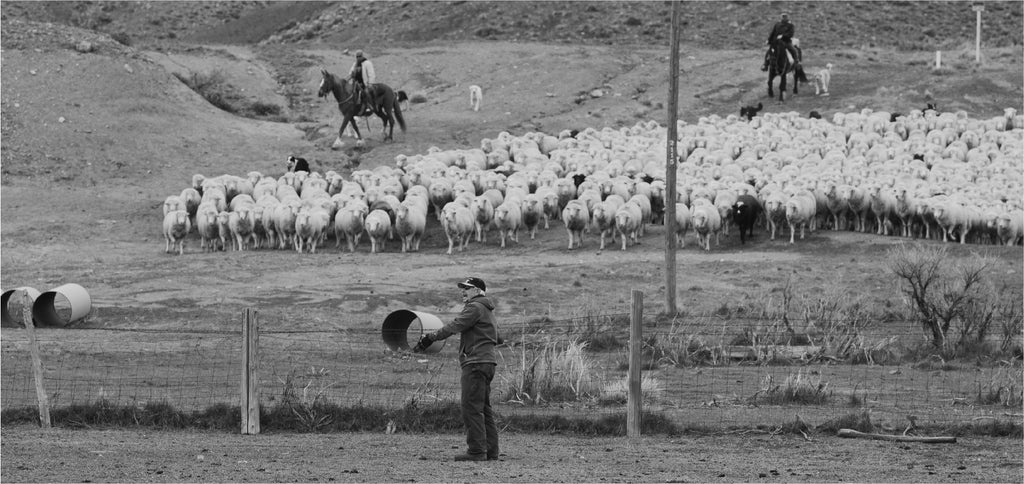All Photos by Jordan Brannock
Fred Roberts of Roberts Ranch in Cokeville, Wyoming, comes from a long lineage of sheep farmers. Today, he’s part of a growing resurgence of American wool producers. Fred Roberts never set out to become a sheep farmer. But he couldn’t help it; it’s in his blood.

Roberts Ranch was run by his father and grandfather in Cokeville, Wyoming, a high plains town in the southwest corner of the state. Cokeville grew up around the railroad that intersects the town and, in the 1920s, it was known as the “Sheep Capital of the World.”

Fred’s grandfather, also named Fred, emigrated from England to New York as a young boy, one of seven children to a hard-working farmer and his wife. He worked for the railroad and, in the mid 1880s, he moved west to Wyoming, where he bought a plot of land and started raising sheep. “At that time, sheep was the deal in Wyoming,” says the present-day Fred.
When Fred’s grandfather died at a young age, Fred’s father took over duties on Roberts Ranch. Fred was born in Salt Lake City, Utah, but he grew up in Cokeville, working on the ranch throughout his childhood.
After high school, Fred headed south to Colorado to attend the University of Colorado at Boulder with plans to discover a new career path than the one his father and grandfather had chosen. But after graduating, Fred found that his dad—then in his 70s—needed help on the ranch.
“I wasn’t ever going to come back here and do this, but one thing led to another and I came back and started to help my dad,” Fred says now. “And here I am.”

Now, Roberts Ranch has around 7,000 ewes and 400 head of cattle. It is part of a group of ranches that collectively are the largest Bureau of Land Management permit holders in the country, managing over 2.4 million acres of grazing land. Fred is also on the American Wool Council and he’s part of a growing resurgence of American wool production.
Roberts Ranch is a migratory outfit, meaning the sheep spend their winters in the high desert near Rock Springs, Wyoming, and then travel by foot back to Cokeville for the spring, where the shearing and lambing takes place. In the summer, the sheep migrate toward forest grazing 35 miles south of Jackson Hole. After a brief stop in Cokeville in late September, they head back to the high desert in Rock Springs and the cycle begins anew. In an average year, the sheep travel some 600 or 700 miles.
Fred admits that he came back to Roberts Ranch for his dad, but he stayed for the animals. “I like the animals, I like the lifestyle and being outdoors,” says Fred, who mountain bikes and skis in his spare time. “I think over the years I’ve done some things with the sheep and the cattle, as far as improving things, and it’s always been a challenge and a learning experience. Most people are in this business for the love of the animals.”

His favorite part of being a rancher is working with the animals, and it’s evident when you watch him during the shearing process—he is meticulous and careful. His hands moving with the swiftness of someone who’s been repeating this pattern for years. The sheep are his livelihood. When he says “we,” he means himself and his sheep.

Fred will most likely be the last of the Roberts clan to run the ranch. His own children live in Salt Lake City now and have lives of their own. He remains proud to be part of this business and says, despite his deep roots in ranching, that every day feels new and different.
“I think people are much more knowledgeable about what they use and what they eat,” Fred says. “They’re very in tune with wanting to know where that product — whether it be lamb, beef, or wool — comes from and how that animal was raised and treated and how the end product comes to be.”
Note: Today, Fred's son Kyle is learning about ranching with plans to continue the Roberts Ranch tradition into a fourth generation.
Here in Fred's own words how the ranch started with his grandfather:


